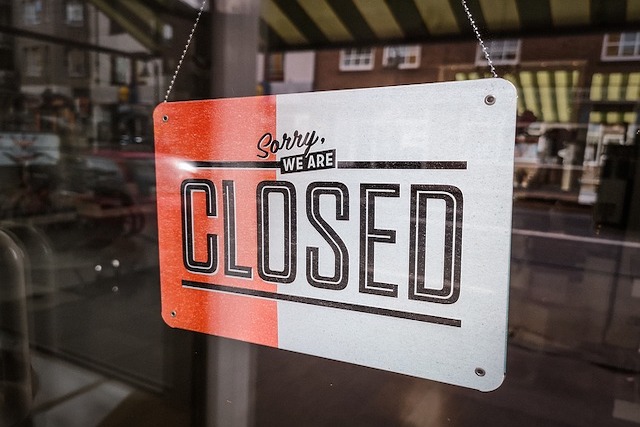There are many reasons why a shareholder may want to liquidate a company. Perhaps they believe that the business does not serve a purpose anymore, or maybe they wish to retire or move abroad. Other potential causes for a shareholder to try and liquidate a firm is if the organisation is struggling to pay its debts or is completely insolvent.
Whatever the reasoning, there is one question that needs to be asked: can a shareholder liquidate a company themselves? Do they have the power to close a business, or does only a company director have that luxury?
What Does Liquidating a Company Mean?
Before we explain whether a shareholder can liquidate a company, we will first of all touch upon what liquidation actually means. Put simply, it is the process of closing down a firm so that it is no longer a legal entity.
All of the company’s assets are then liquidated to raise capital to satisfy its creditors (if any exist) before the business is wound down. Liquidation can either be voluntary or compulsory, depending on the firm’s circumstances, and must be carried out by a licensed liquidator or insolvency practitioner.
For more information about the company liquidation process, please read our blog on the subject.
Can a Shareholder Liquidate a Company?
For shareholders to be successful in liquidating a company, they must first of all have to call an emergency general meeting. All parties involved should be given at least 14 days’ notice before the meeting takes place.
The purpose of a general meeting for shareholders to vote on a special resolution to voluntarily liquidate the firm. If the motion is to be successful, it must garner support from at least 75% of shareholders. Votes are represented by the number of shares owned by each shareholder, meaning the more shares owned by an individual, the more powerful their vote will be.

If the motion passes, shareholders must then agree on which licensed insolvency practitioner they will work with, and also which form of liquidation is more suitable for them. There are two main options when it comes to voluntary liquidation, which are:
- Members Voluntary Liquidation (MVL): for solvent liquidations
- Creditors Voluntary Liquidation (CVL): for insolvent liquidations
A solvent liquidation can only take place if the company is able to pay off all of its debts within 12 months, or if the business does not have any creditors at all. If the firm is not able to satisfy its debts and closure is the only way forward, an insolvent liquidation should be chosen.
There is a third form of liquidation, known as a compulsory liquidation. This is where a company’s creditors force it to close by way of a winding up petition. Shareholders have no input at all in this method, meaning they are effectively powerless.
What if there is a Conflict of Opinion?
While you may be forgiven for thinking that shareholders and company directors will be the exact same people, this is not always the case. For some companies, shareholders could be friends or family members of the owners. Depending on the size of the firm, there may also be third-party investors involved.
Because of this, situations may arise where there is a conflict of opinion as to whether the company should be liquidated. Should this happen, the firm’s Articles of Association will outline the procedures that need to be taken to resolve shareholder disputes. If neither side is willing to back down, however, this could cause a problem.

Using independent mediation services is one way to resolve the situation. This will provide all parties involved with the opportunity to take a more objective view of the business, rather than being entrenched in their own opinions.
If mediation is not successful, or shareholders still want to push through a company liquidation, they can apply for a ‘just and equitable’ winding up petition. This type of liquidation is triggered by the courts, and is usually called upon to end periods of deadlock.
Should this process be started, it will be left up to the courts to decide whether or not voluntarily closing the company is the best option to take. Although a ‘just and equitable’ winding petition is a viable option, it is quite a rare occurrence. This is because they are only really necessary if there is a complete breakdown in trust and confidence between shareholders.
How does Liquidation Affect Shareholders?
When a company is being wound down, it must ensure that any remaining assets are distributed to shareholders. This can only take place once the firm’s creditors have all been paid, if applicable.
Of course, this can only really take place in the event of a solvent liquidation. If the company does not have enough funds to satisfy its debts, then shareholders will most likely have to forfeit their investment altogether.
If you would like to find out more about the responsibilities a company has towards its shareholders during a liquidation, please read our blog.
How Inquesta Helps With Liquidation
If you are looking for assistance with all forms of liquidation, you can rely on Inquesta to help. We have lived and breathed the industry for decades, meaning we are perfectly placed to provide expert guidance, no matter your circumstances.
The Inquesta team can act as an independent mediator in the event of a shareholder dispute, offering an objective opinion on your company’s financial situation and recommending what we believe is the best course of action for you. If liquidation is the only real answer, we are also licenced insolvency practitioners, meaning we can assist you with the process from start to finish.
We are proud to offer a truly holistic service to our clients. This is why we have created a free eBook that offers essential guidance on all aspects of the company liquidation process, from warning signs to look out for, to all the different options available to you.
To find out more about how Inquesta can help you, contact a member of our team today or book a consultation.




